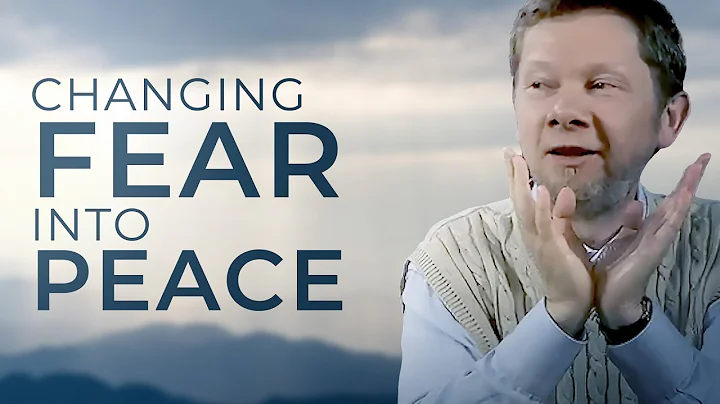Mastering the Usage of 'Enough'
Table of Contents
- Introduction
- Meaning of the word "enough"
- Two ways to use the word "enough"
- Before a noun
- After an adjective or adverb
- Examples of using "enough" before a noun
- Examples of using "enough" after an adjective
- Practicing the use of "enough"
- Conclusion
- Further practice and resources
📚 Introduction
Welcome to this lesson on how to use the word "enough" correctly. In English, "enough" is a commonly misused word, so it's essential to understand its proper usage. This lesson will help you grasp the two different ways to use "enough" and provide examples to illustrate each usage. By the end of this lesson, you will be more confident in using "enough" correctly in your conversations and writing.
📚 Meaning of the word "enough"
Before we dive into the different ways to use "enough," let's first understand its meaning. "Enough" indicates having as much or as many of something as needed. It implies sufficiency or adequacy. For example, if you have a few minutes, you have enough time to watch this lesson and learn from it.
📚 Two ways to use the word "enough"
In English, "enough" can be used in two distinct ways: before a noun or after an adjective or adverb. Understanding these two usage patterns will help you use "enough" correctly in sentences.
📔 Before a noun
When using "enough" before a noun, it signifies that the quantity or amount is sufficient. Here are some examples to illustrate this usage:
- "We have enough food for the party."
- "We have enough space in this room for everyone."
- "We have enough chairs for all the guests."
📔 After an adjective or adverb
Alternatively, you can use "enough" after an adjective or adverb to indicate adequacy. Consider the following examples:
- "It's warm enough in the room."
- "Is your tea sweet enough?"
- "The teacher explained the lesson clearly enough for everyone to understand."
📚 Examples of using "enough" before a noun
Let's take a closer look at one example and see how "enough" works when used before a noun. Consider the following sentence:
- "He has enough money to buy the car."
In this case, "enough" is used to state that the individual has a sufficient amount of money. The word "enough" is placed before the noun "money" to indicate adequacy.
📚 Examples of using "enough" after an adjective
Now let's examine an example of using "enough" after an adjective. Take a look at the following sentence:
- "He is rich enough to buy the car."
In this example, "enough" is used to convey that the person has a satisfactory level of richness. The word "enough" follows the adjective "rich" to indicate adequacy.
📚 Practicing the use of "enough"
To ensure that you have understood the usage of "enough" correctly, let's practice a few examples together:
-
Do we say "enough rice" or "rice enough"?
Answer: We say "enough rice."
-
Do we say "enough carefully" or "carefully enough"?
Answer: We say "carefully enough."
-
Do we say "enough experience" or "experience enough"?
Answer: We say "enough experience."
-
Do we say "enough tall" or "tall enough"?
Answer: We say "tall enough."
-
Do we say "The house was enough clean" or "clean enough"?
Answer: We say "clean enough."
-
Do we say "There were enough people" or "people enough"?
Answer: We say "enough people."
-
Do we say "The candidate had enough votes" or "votes enough"?
Answer: We say "enough votes to win the election."
-
Do we say "You speak enough well" or "well enough"?
Answer: We say "well enough."
-
Do we say "We have enough rooms for everyone" or "we have rooms enough"?
Answer: We say "enough rooms for everyone."
-
Do we say "The house is enough quiet for the baby to sleep" or "quiet enough"?
Answer: We say "quiet enough."
📚 Conclusion
In conclusion, understanding the correct usage of the word "enough" is crucial to communicate effectively in English. By using "enough" before a noun or after an adjective, you can convey sufficiency or adequacy in your sentences. Remember to practice using "enough" to ensure you feel comfortable incorporating it into your spoken and written English.
📚 Further practice and resources
For more practice and to reinforce your understanding of the usage of "enough," visit our website: www.engvid.com. There, you can access quizzes and watch other engaging English language learning videos. If you found this lesson helpful, make sure to subscribe to our YouTube channel for more insightful lessons.
Highlights
- The word "enough" is commonly misused in English.
- "Enough" can be used before a noun or after an adjective or adverb.
- "Enough" signifies sufficiency or adequacy.
- Using "enough" correctly enhances communication in English.
- Practice is essential to master the usage of "enough."
- Visit www.engvid.com for further practice and resources.
FAQ
Q: Why is the word "enough" commonly misused?
A: Many students make mistakes while using "enough" because it can be used in two different ways, leading to confusion.
Q: Can "enough" be used before a verb?
A: No, "enough" is not typically used before a verb. Its usage is limited to before a noun or after an adjective or adverb.
Q: How can I improve my understanding and usage of "enough"?
A: Practice is key! Engaging in regular exercises and quizzes, like the ones provided on www.engvid.com, can help you gain confidence in using "enough" correctly.
Q: Are there any other resources I can use to improve my English language skills?
A: Yes, apart from www.engvid.com, there are many other reputable websites, books, and online courses available to enhance your English language proficiency. It's always beneficial to explore various resources to find the ones that resonate with your learning style.







